February 2024
While shipwrecks are often the primary focus of maritime heritage preservation in America’s Great Lakes national marine sanctuaries, a recent two-part maritime cultural landscape study of the 962-square-mile Wisconsin Shipwreck Coast National Marine Sanctuary reveals that shipwrecks only tell part of the story of human connections to the natural environment in this region. There were many harbors, shipyards, and lumber mills associated with Euro-American fisheries tied to sanctuary waters, and these inland seas were essential for Indigenous peoples for millennia before European contact. The report highlights the need for future Tribal cultural landscape studies by Indigenous peoples in their own voices.
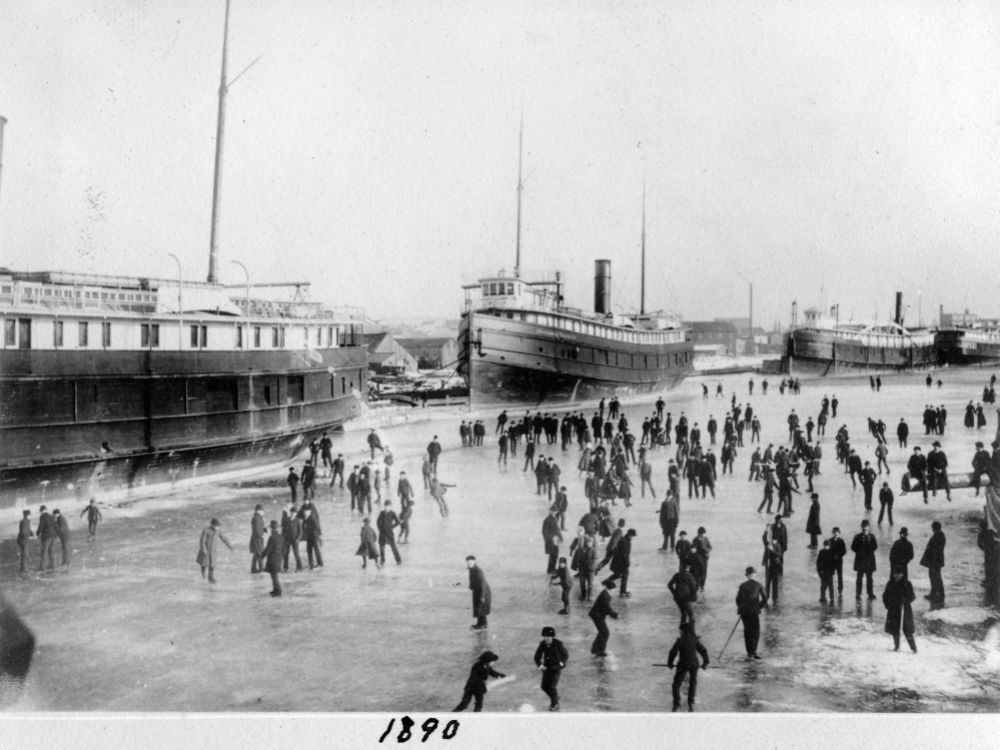
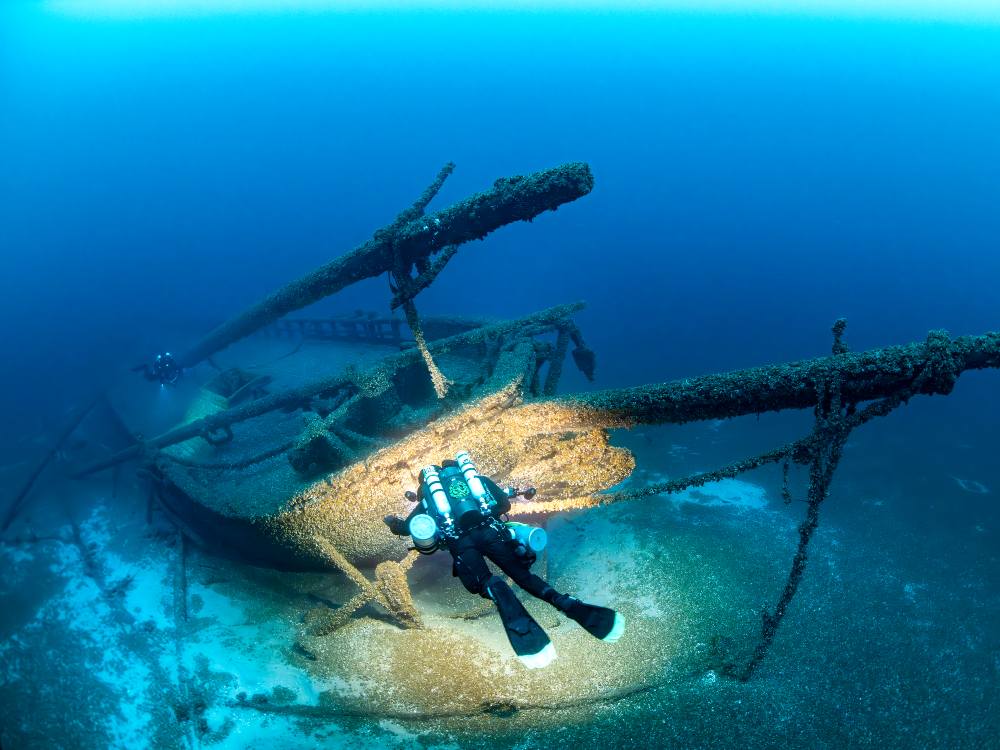
“People have used these waters for over 10,000 years,” said Russ Green, superintendent of Wisconsin Shipwreck Coast National Marine Sanctuary. “Historic shipwrecks happen to be the most visible of the sanctuary’s archaeological features, but they represent just a fraction of its history and cultural significance. We hope this report can be a starting point to working in partnership with local Indigenous peoples in future cultural studies.”
What is a Maritime Cultural Landscape?
A maritime cultural landscape study is like a special investigation that looks at the connection between people and the marine environment over time. It explores how humans have interacted with the ocean, rivers, and other waterways, and how these interactions have shaped cultures and communities. This study goes beyond just the physical structures like boats or ports; it also considers stories, traditions, and communities related to waterways.
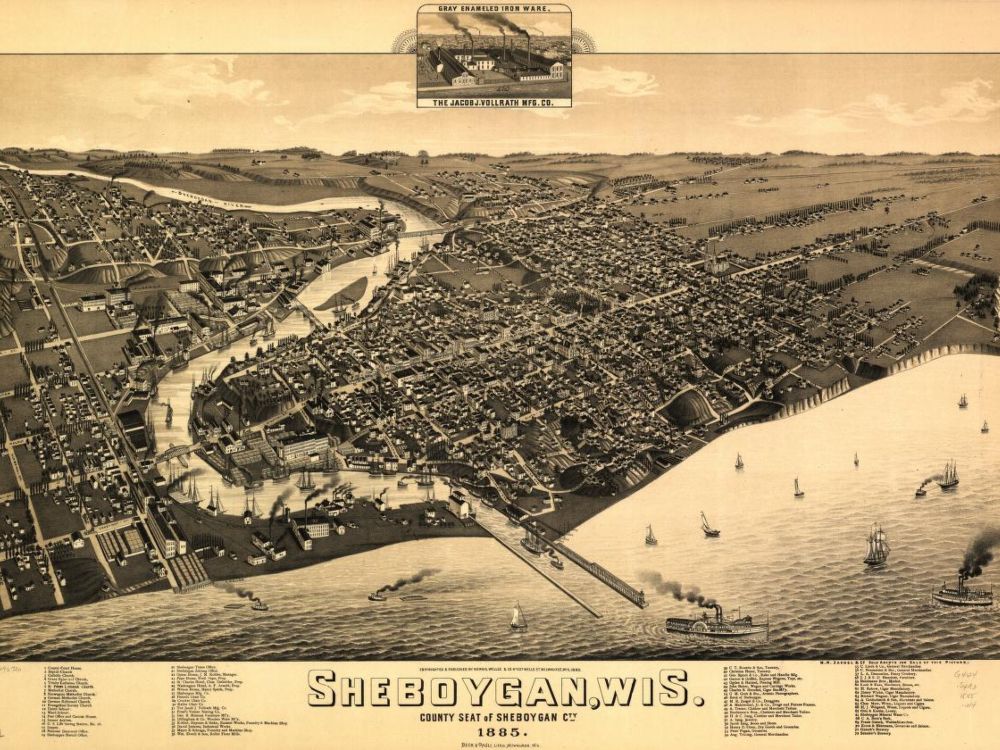
Researchers in maritime cultural landscape studies dig into historical records, oral traditions, and archaeological discoveries to piece together a detailed picture of how people have used and lived by the water. They might look at old maps, shipwrecks, fishing practices, folklore, and written and oral histories to understand the deep ties between human societies and the maritime environment. The goal is to preserve and appreciate the rich heritage tied to the ocean and Great Lakes, recognizing its influence on cultures, economies, and daily life.
“These studies help us learn from the past, appreciate maritime traditions, and make informed decisions about how to protect and sustain our maritime heritage for future generations,” Green said.
The two-part cultural landscape study of Wisconsin Shipwreck Coast National Marine Sanctuary identifies shipbuilding, manufacturing, fishing, and lumber as significant areas of cultural and environmental interaction, and considers elements of both the Euro-American “Atlantic” maritime landscape and current scholarship on the older Indigenous cultural landscapes.
About the Shipwrecks
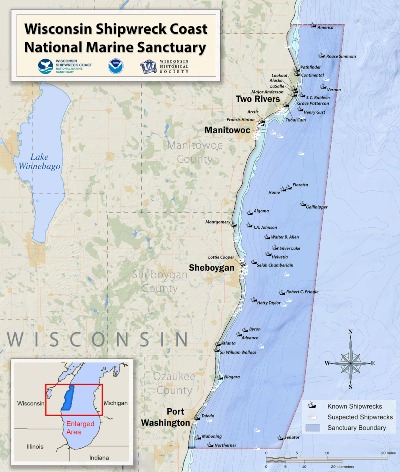
The Great Lakes are a vast natural highway extending over a thousand miles into the heart of North America, and have been integral to Indigenous peoples and American trade and commerce. These waters are not only known for their usefulness as trade routes and fishing grounds, but also are famously known for their treacherous conditions and the many shipwrecks that lie beneath the waves. When looking at just the past 300 years, these waters have been utilized by Euro-Americans and have greatly contributed to the growth of the North American interior. During the 19th and early 20th centuries, the Great Lakes evolved from an isolated maritime frontier into the nation’s busiest and the world’s most significant waterway.
Co-managed with the state of Wisconsin, the sanctuary along Wisconsin’s “Shipwreck Coast” of Lake Michigan first and foremost manages a nationally significant collection of 40 well-preserved historic shipwrecks. The historically diverse vessels represent broad patterns that are part of American history on the Great Lakes, and preserve the personal stories of entrepreneurship, innovation, tenacity, and hardship that defined the period. Like submerged time capsules, shipwrecks are the central resource type for preserving our maritime heritage.
The newly-completed landscape assessment, however, reveals that beyond the shipwrecks, there are other significant tangible and intangible maritime heritage resources that hold stories from the past worth telling. The report highlights that there is a need to dig deeper into the history of the ports, harbors, shipyards, and lumber mills associated with the sanctuary, as well as the history of Indigenous fisheries and other uses that existed before European contact.
Approaching the Past
Long before European contact, these vast waterways were integral to Indigenous peoples, providing essential trade, communication, and sustenance. People have shaped, and in turn been shaped by, their marine environment in many significant ways, reflected in multiple voices and multicultural perspectives.
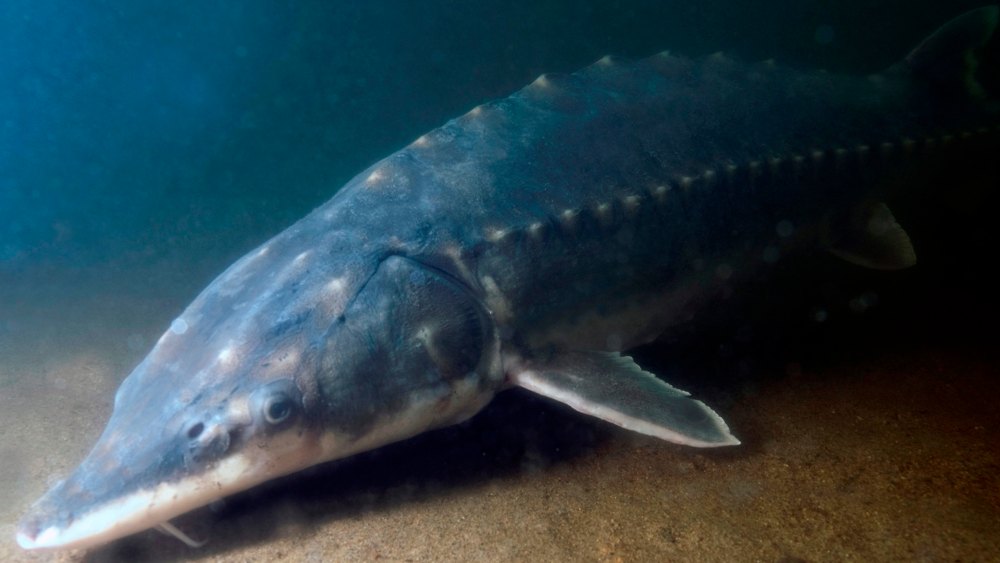
The landscape study recognizes that pre-contact history is central to the understanding of the area’s cultural past and present, citing contemporary tribal studies such as studies on the seasonal fishing villages of the Menominee, Ho-Chunk, Ojibwe, and Potawatomi. However, this recognition does not supplant, but rather highlights, the need for Tribal cultural landscape studies by Indigenous communities in their own voices.
Informing Future Management
The study of maritime cultural landscapes allows national marine sanctuaries to engage with and learn from local individuals, families, and communities about their relationships to sanctuary waters and surrounding lands. These voices represent the history and the cultural heritage of Native Americans, fishermen, military, lighthouse keepers, tourism operators, recreational divers, developers, coastal managers, museum operators, and many more.
The landscape characterization provided in this report series supports the information needs of the upcoming condition report and management plan review processes for Wisconsin Shipwreck Coast National Marine Sanctuary. The information provided by the landscape study will also be used to support future educational experiences and public outreach products tied to the sanctuary’s mission, such as partner exhibits, websites, videos, and cultural tourism projects.
Hans Van Tilburg is the maritime heritage coordinator for NOAA’s Office of National Marine Sanctuaries
Rachel Plunkett is the content manager and senior writer/editor for NOAA’s Office of National Marine Sanctuaries

